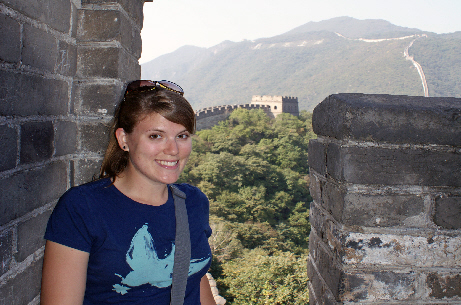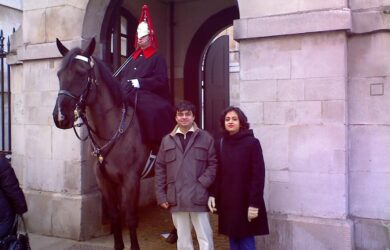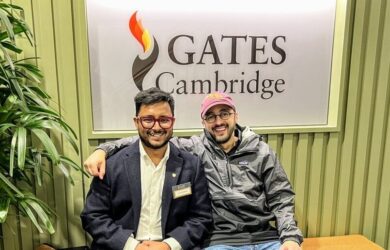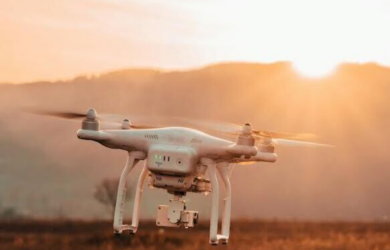
Suzanne Pilaar is studying how humans adapted to climate change in the Holocene period.
How do human populations adapt to extreme climate change? It’s an urgent question in the current age where we are warned almost daily of evidence of environmental transition. One answer is to look at ancient civilisations who have undergone similar change.
That is what Suzanne Pilaar Birch [2008] is doing and her research on the Eastern Adriatic over 7,000 years ago covers new ground by bringing together the study of animal bones and stable isotope analysis at three sites in the same region.
“It’s really exciting,” she says, “and gives you a real picture of local climate change and how populations adapt to environmental change. Understanding human adaptation to extreme environmental change can be really informative for the kind of things happening in the current age.”
Suzanne has always been intensely curious about the world around her and showed an early interest in global history. Born in New Jersey, she lived with her parents, two elder brothers, her grandmother and her aunt. Both her parents were immigrants to the US. Her dad, a retired graphic artist, moved from Holland to the US with his parents after the second world war and her mum, who is also a graphic artist, met him through work after she came to the US from Cuba in the 1960s.
She was academically inclined from an early age.
At primary school she was in the gifted and talented group of children. At high school she took part in college level courses in English, biology and history. As part of her biology classes she went to a DNA lab, Cold Spring Harbor Laboratory on Long Island, New York, which she found “really amazing”.
When she started at Rutgers University she was intending to major in biology, but once she started doing classes she realised it was not “the right fit” for her. She discovered human ecology. “I was always interested in biology and archaeology,” she says. “I realised I could put them together and study human environmental interaction in the past.”
She majored in both evolutionary anthropology and something called paleoecology, a subject not offered before at the university but which she put together with her adviser at the time. It had to be approved by the dean. She says there was a lot of overlap between evolutionary archaeology and paleoecology.
During her undergraduate degree she did a one-month course in landscape architecture in Mexico with a view to understanding archaeological sites in their ecological settings better. It was the first time she had been out of the US. She also did an internship at the American Museum of Natural History and another at the Smithsonian where she did research on early domestication of sheep and goats. She looked at changes in the way people managed animals, based on evidence excavated from sites in Iran and Iraq in the 1970s.
She wrote up her research in her final year and it has been published in an academic journal.
For her masters, which she did at the University of Cambridge through a Gates scholarship, she focused on changing human mobility and the transition from hunting and gathering to using domestic animals on one Adriatic island. She was looking at whether existing societies were becoming more sedentary and adopting animals while continuing to hunt and gather or whether other groups were coming in from outside to replace them.
She chose Cambridge for her PhD because of her supervisor. She had never been to Europe before, although she had spent two months on a site in Turkey. The summer before she came to the UK she got married and her husband, a teacher, moved to Cambridge with her.
She is now in her last year of her PhD in Archaeology and is writing up her research now..
Her research connects changes in diet and human mobility with environmental change in the Eastern Adriatic between 11,000 and 7,000 years ago. This was during the early Holocene period which saw the transition to the introduction of domestic animals and agriculture in Europe. Suzanne studied excavated bones to check what people were eating and whether they were migrating from other areas. She also used stable isotope analysis to study environmental change. Oxygen isotopes vary with temperature and are absorbed into animals’ teeth. “By drilling the teeth we can get their isotope signature,” she says. “We can see if animals were migrating from different climates through studying their teeth.” She compared this and other evidence from isotope analysis of shells with information on pollen levels to get a broader picture of environmental change at this time.
What she found suggests that people were becoming less mobile and settling into local regions. “They might still be moving around, but they were not roaming so far,” she says, “and they stayed longer in the same place. They were also eating a greater variety of food, including plants, and incorporating shellfish and fish into their diet as sea levels rose.”
She says it was a very gradual transition with people starting to own more and more sheep and goats while still hunting animals. It was not about new groups suddenly coming in from outside.
Suzanne, who also organises seminars in the archaeology department at Cambridge and edits The Archaeological Review, a graduate-run journal, has also done research in other areas during her PhD. She went to Kazakhstan to study the spread of domestic crops and animals across Asia.
She hopes to finish her PhD by the summer and continue to investigate how populations have adapted to major climate change in the future.












